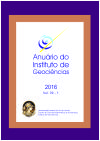Analyzing Urban Sprawl of Tehran Metropolis in Iran (During 1956-2011)
DOI:
https://doi.org/10.11137/2016_3_55_62Keywords:
Urban development, Urban sprawl, Metropolis areas, Heldren model, Tehran metropolis.Abstract
Physical development is one of the requirements for urban growth. The uncontrolled urban growth especially for metropolis areas often results in undesirable phenomena such as environmental destruction, city creeping, creation of rural-urban environments and so forth. Today, urban sprawl has changed to a knotty problem for many developing areas. Urban sprawl has been known as a varied concept when it deals with automated development and low- density development. It has a significant effect on surrounding ecosystems. Tehran metropolis-known as the capital of Iran- is not excluded from this rule because sprawling has been intensified during 20th century and will have continued despite existing planning, rules and programs. In this respect, the present study attempts to examine and to assess sprawl in Tehran metropolis with Heldren model. The results indicate that the proportion of population growth in Tehran metropolis is generally more than the proportion of urban sprawl. Overall, between 1956 and 2011, the degree of Tehran physical growth was 73.3 percent owing to the population growth whereas 26.7 percent owing to city sprawl. Presence of a green belt around the city, emphasis on compact city and controlling the building are solutions that this study proposes to prevent Tehran sprawl.Downloads
Download data is not yet available.
Downloads
Published
2016-10-03
How to Cite
Zali, N., Ghal'ejough, F. H. and Esmailzadeh, Y. (2016) “Analyzing Urban Sprawl of Tehran Metropolis in Iran (During 1956-2011)”, Anuário do Instituto de Geociências. Rio de Janeiro, BR, 39(3), pp. 55–62. doi: 10.11137/2016_3_55_62.
Issue
Section
não definida
License
This journal is licensed under a Creative Commons — Attribution 4.0 International — CC BY 4.0, which permits use, distribution and reproduction in any medium, provided the original work is properly cited.















